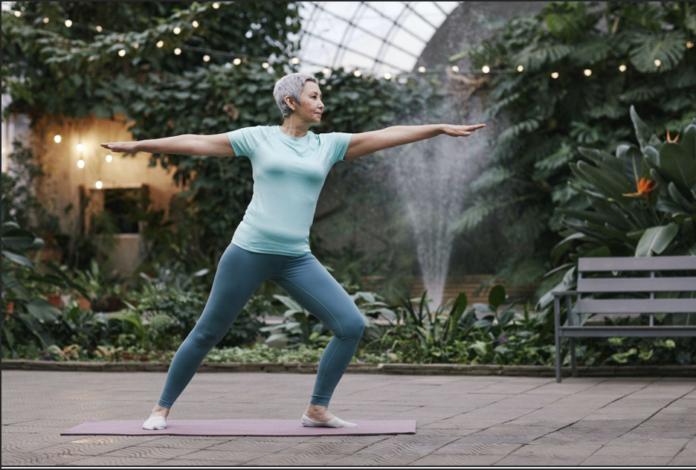Humans develop physical mobility as they grow, from learning to walk, run and jump to learning to grasp items, write and more. Over time, this mobility also deteriorates as a person ages, especially when their flexibility and energy level are not the same as before. Physiological changes, like the ageing of the bones and muscles, and the degeneration of joints. Muscles may shorten and lose elasticity over time which can limit a person’s movement or range of motion. These are all parts of ageing and can affect a person’s mobility. They are unavoidable, but can be slowed down.
Remaining mobile as one gets older is easiest when one puts in the effort and attention to keeping the body healthy and nimble. Here are five ways to improve mobility, as well as improve energy levels and retain flexibility as one age.
- Balance Strength and Flexibility
People often associate exercising and working out with building and strengthening muscles. As this is relatively true, there are also other purposes for performing exercises, like improving and maintaining flexibility. For people starting to age, it is highly suggested to not just exercise to build physical strength but to balance it out with activities that build tolerance and flexibility.
It is important to understand that strength and flexibility go hand in hand in enabling a person to move continuously and accomplish tasks daily. Beyond exercise and working out, it is also important to have a balanced diet, that both helps strengthen the body and maintain the elasticity and flexibility of the muscles and joints.
- Switch Up Positions
Doing a single type of movement repetitively can develop into overuse and repetitive motion injuries or repetitive strain injuries. When you apply the same amount of stress on your joints, muscles, or other tissues regularly over a long period of time, it can develop micro tears and damage which accumulate into a significant injury.
This also applies if you regularly stay in one position for a long time, like sitting in the same chair or couch or sleeping in the same position for years. Some people are comfortable sleeping in one or two positions, but this can actually affect their mobility over time, as their weight and the tension are on the same muscles every night. This is even further aggravated if their beddings are not appropriate for their preferred sleeping style.
Frequent movement and doing a wide range of activities regularly can help improve mobility. It also helps to get the right beddings that can help ease tension and pressure on your body when you sleep, so switching positions will not be too difficult. Check out Nolah’s original mattress, which offers pressure relief, gentle body contouring, and excellent cooling. This is perfect if you want to switch positions comfortably.
- Consider Physical Therapy
Physical therapy is an ideal way to regain flexibility and mobility. You do not actually have to lose your mobility before getting into physical therapy. It is a good preventive measure to get checked by a Physiotherapist in North York even when you are just experiencing minor pains, discomfort, and reduced flexibility. They can help you better address your condition and take preventive and/or curative and corrective measures for your condition.
Physical therapists can help regain flexibility that has been reduced or lost due to other illnesses and conditions, like stroke, paralysis and injuries. Moreover, they can also help manage pain, aid in recovery from operations or assist individuals who simply want to improve mobility, movement and balance.
- Incorporate Stretching
Cardio activities, like running and cycling, help build muscles. But doing only this can limit the muscle’s ability and even strain the muscle, joints and tissues within the body. Incorporate exercises that focus on flexibility, like stretching and even activities like yoga and pilates.
It is also ideal to include regular stretching in your daily activities, when you wake up or before you go to bed. Stretching helps increase circulation and blood flow. It also helps release muscle tension and move the joints around a bit to release pressure. Neck and shoulder rolls as well as tricep stretches, lunges and leg stretching are some of the basic ones that beginners can do.
- Maintain a Joint-Friendly Diet
Diet plays a vital role in keeping the body strong and healthy, and this includes mobility and flexibility. The body primarily relies on its natural proteins like collagen and elastin to lubricate joints and keep the muscles elastic. Therefore, you need to look for food items that aid in the production of these proteins, like those with essential fatty acids (EFAs), vitamin C and sulfur. This includes fish, fruits and nuts and liquid oils.
Incorporate “ joint-friendly” foods into your diet, like watery fruits and vegetables. Joint-friendly means they aid in lubricating your joints, so you can have a full range of movement without the hassle. Additionally, you can consider taking food supplements for joints and muscle flexibility, though it is advised to get a doctor’s advice before taking any medication.
Most importantly, drink plenty of water. Water is the primary source of the body’s moisture and lubrication, so it should be number one on the list if you are looking to make your diet joint-friendly.
Move Freely Even as You Age
Everyone will likely age and experience changes in energy levels and in flexibility and mobility. It is part of the human body’s natural process. But there are easy ways to slow the process down and keep the body moving freely even at one age, through proper diet, sleep, hydration and the right movements and exercise. Be very mindful in caring for your body and you will surely go through ageing gracefully.


Thank you for your sharing. I am worried that I lack creative ideas. It is your article that makes me full of hope. Thank you. But, I have a question, can you help me?